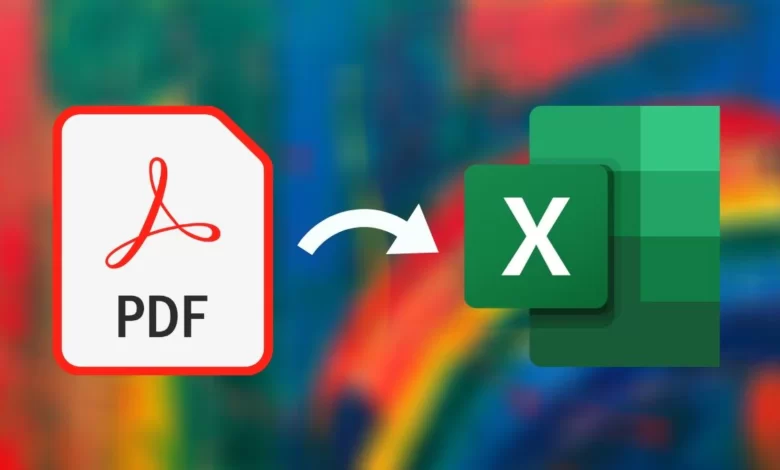The Comprehensive Guide to Converting PDFs to Excel

In today’s data-driven world, businesses rely heavily on accurate and organized information to make informed decisions. However, PDFs continue to be a major challenge in data analysis due to their unstructured nature. Converting PDFs to Excel is a vital step in unlocking valuable insights from these documents and making them actionable. By Convert pdf to excel, businesses can easily manipulate data, perform calculations, and generate reports. However, this process can be time-consuming and laborious. That’s where this comprehensive guide comes in – we will walk you through the process of converting PDFs to Excel, step-by-step. We will cover the various tools and software available, and highlight their unique features and limitations. We will also discuss best practices for data cleaning and formatting to ensure accuracy and consistency. Whether you are a seasoned data analyst or a beginner, this guide will equip you with the knowledge and skills needed to unlock the full potential of your PDF documents.
Understand the benefits of converting
Understanding the benefits of converting PDFs to Excel is crucial for businesses that deal with large amounts of data on a daily basis. Converting PDFs to Excel offers several advantages, including the ability to manipulate, analyze, and visualize data more effectively. Excel’s powerful features and functions provide users with a flexible tool to manage data, create reports, and make data-driven decisions. In addition, converting PDFs to Excel can help businesses save time and money by eliminating the need to manually enter data into spreadsheets. This comprehensive guide will equip you with the knowledge and skills required to convert PDFs to Excel, enabling you to unlock the full potential of your data.
Identify the right conversion tool
One of the most crucial steps in converting PDFs to Excel is identifying the right conversion tool for your needs. With the numerous software and online tools available, it can be overwhelming to choose the right one that fits your requirements best. It’s essential to find a tool that can convert your PDFs accurately and efficiently, with minimal effort from your end. Look for a conversion tool that can handle complex tables and data structures, recognize text and numbers accurately, and preserve the formatting of the original document. Additionally, consider the cost, ease of use, and security features of the tool before making a decision. Taking the time to identify the right conversion tool can save you time, effort, and frustration in the long run, and help you unlock the valuable data in your PDFs.
Prepare your PDF document
Preparing your PDF document is an essential step in the process of converting PDFs to Excel. Identifying the type of PDF you are working with is the first step towards preparing your document. Scanned PDFs, for example, will require additional steps to be taken before conversion, such as Optical Character Recognition (OCR) conversion. Additionally, it is important to ensure that your PDF is in a format that is compatible with the conversion software you will be using. This can include making sure that the file is not password-protected or that it does not contain any complicated formatting. By taking the time to properly prepare your PDF document, you can ensure a smoother and more accurate conversion process.
Familiarize yourself with formatting
One of the crucial steps in converting PDFs to Excel is to familiarize yourself with formatting. The reason why this is important is because PDFs are designed to be static and uneditable, which means that the text and other elements in the document may not be organized in a way that can be easily extracted and converted. By understanding how to identify and format the relevant data points in the PDF, you can save yourself time and effort in the conversion process. This includes knowing how to adjust column widths, merge and split cells, and apply formatting to text and numbers. It may take some practice to get the hang of it, but having a good grasp of formatting can make a significant difference in the accuracy and efficiency of your PDF to Excel conversions.
Convert your PDF to Excel
Unlocking Data: The Comprehensive Guide to Converting PDFs to Excel is an essential document for anyone seeking to extract data from PDF files and convert it to Excel format. This guide provides step-by-step instructions for converting your PDFs to Excel, enabling you to unlock valuable data that can be used to make more informed business decisions. One of the key steps in this process is converting PDFs to Excel using a reliable software tool that accurately converts text, tables, and other data types. With the right software, you can quickly and easily convert your PDFs to Excel, saving you time and effort while ensuring the accuracy of your data. By following the guidelines in this guide, you can become an expert in converting PDFs to Excel and gain a competitive edge in your industry.
Review and refine your data
Reviewing and refining your data is an essential step in the process of converting PDFs to Excel. Once you have extracted the data from the PDF, it is important to take the time to carefully review and validate the accuracy of the data. This involves checking the data against the original PDF document to ensure that all information has been captured correctly. Additionally, it is recommended to use data validation techniques to identify any potential errors or inconsistencies in the data. Refining your data involves organizing it into a format that is easy to read and analyze. This may include removing unnecessary columns or rows, formatting the data to be consistent, and applying formulas and calculations to generate additional insights. By taking the time to review and refine your data, you can ensure that it is accurate, reliable, and ready to be used for further analysis and decision-making.
Secure your data
In today’s digital age, data is more valuable than ever before. From sensitive personal information to confidential company data, it’s crucial to secure your data to prevent unauthorized access and potential data breaches. As you work with PDFs and Excel files, it’s important to take steps to protect your data. This includes using encryption technology, strong passwords, and firewalls to safeguard your files. Additionally, it’s important to be vigilant about phishing scams and other cyber threats that can compromise your data. By taking these steps to secure your data, you can ensure that your information remains safe and protected at all times.
Consistently optimize your process
Consistently optimizing your process is key to a successful and efficient PDF to Excel conversion. It is important to regularly evaluate your workflow and identify areas where improvements can be made. This can include streamlining your data extraction process by utilizing automation tools, such as OCR software and macros, to reduce manual data entry. Additionally, regularly updating and organizing your data can lead to a more efficient analysis and ultimately improve decision-making. By consistently optimizing your process, you can save time and resources, minimize errors and inaccuracies, and ultimately unlock the full potential of your data.
Conclusion
Converting PDFs to Excel can be a time-consuming and often frustrating task, but with the right tools and techniques, it can be a breeze. By following the comprehensive guide we have provided, you can unlock the valuable data that is often hidden within your PDF documents, making it easier to analyze and work with. By utilizing the various software options available, coupled with some careful planning and attention to detail, you can streamline your workflow and get the most out of your data. With the knowledge and skills gained from this guide, you will be well on your way to becoming an expert in PDF to Excel conversion.





